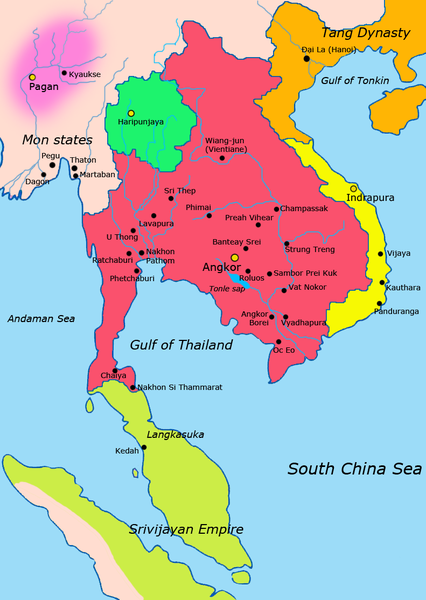When it comes to food, it is reasonable to expect varieties not only form different towns or regions but also within the region.
Take sai ua, the sausage from Laos and the Isan region of Thailand.
Along the streets of Vientiane (also spelled as Vieng Chan), vendors selling grilled sai ua are a plenty. A favorite of mine is the stall in front of an abandoned building along Fa Ngum Road, facing the Mekong River. But today, we explored another dining option in Vientiane by the name of Kualao Restaurant, one of the fancy restaurants located along Samsetthirath Road.
Kualao Restaurant is popular for its regular traditional Lao dance performances. Every night, talented locals donning traditional suits take the stage to present its dances to willing audience, which is followed by a hearty Lao dinner. That said, I am expecting the food to be remarkable. As I have never watched the show, I thought we could at least sample the food.
So off for lunch we went to the uncrowded Kualao Restaurant. Food was prepared only after ordering, except for Mok, a traditional Lao food wrapped and steamed or boiled in banana and pandan leaves which takes an entire day to prepare. Naturally I ordered the pork sausage:
While this is also a sample of sai ua, it's tastes and texture is noticeably different from the ones I've had before. First, using pork and frying instead of grilling it contributed to the rather dry texture of the sausage (Beef when cooked right is almost often more flavorful and juicier than pork). It didn't help that this version of sai ua is longer to keep the juices together. Yet still, I tried to eat this with relish.
Considering how the flavor left me wanting and the price made my wallet ache, I would recommend buying sai ua on the street. The rest of our lunch ensemble was better though -- green papaya salad, mok and fruits in coconut milk (think of thick ginataan with cubed dragonfruit, banana, carrots and rice balls instead of cassava and sweet potato). Kualao is still worth a visit, especially if you're raring to watch the traditional Lao dance number.
* * * * *
Sai ua
Longganisa/sausages of Laos, Asia
Vientiane, Laos
Take sai ua, the sausage from Laos and the Isan region of Thailand.
Along the streets of Vientiane (also spelled as Vieng Chan), vendors selling grilled sai ua are a plenty. A favorite of mine is the stall in front of an abandoned building along Fa Ngum Road, facing the Mekong River. But today, we explored another dining option in Vientiane by the name of Kualao Restaurant, one of the fancy restaurants located along Samsetthirath Road.
Kualao Restaurant is popular for its regular traditional Lao dance performances. Every night, talented locals donning traditional suits take the stage to present its dances to willing audience, which is followed by a hearty Lao dinner. That said, I am expecting the food to be remarkable. As I have never watched the show, I thought we could at least sample the food.
So off for lunch we went to the uncrowded Kualao Restaurant. Food was prepared only after ordering, except for Mok, a traditional Lao food wrapped and steamed or boiled in banana and pandan leaves which takes an entire day to prepare. Naturally I ordered the pork sausage:
Name/Type: Sai ua/sai uwa (listed as Pork Sausage in their menu)
Meat used in the sausage: Pork
Price: 59,000 Kip (LAK) or US$7.34
From Kualao Restaurant
141 Samsenthai Road, Vientiane. Tel & Fax: (856-21) 215 777
While this is also a sample of sai ua, it's tastes and texture is noticeably different from the ones I've had before. First, using pork and frying instead of grilling it contributed to the rather dry texture of the sausage (Beef when cooked right is almost often more flavorful and juicier than pork). It didn't help that this version of sai ua is longer to keep the juices together. Yet still, I tried to eat this with relish.
Considering how the flavor left me wanting and the price made my wallet ache, I would recommend buying sai ua on the street. The rest of our lunch ensemble was better though -- green papaya salad, mok and fruits in coconut milk (think of thick ginataan with cubed dragonfruit, banana, carrots and rice balls instead of cassava and sweet potato). Kualao is still worth a visit, especially if you're raring to watch the traditional Lao dance number.
* * * * *
Sai ua
Longganisa/sausages of Laos, Asia
Vientiane, Laos




